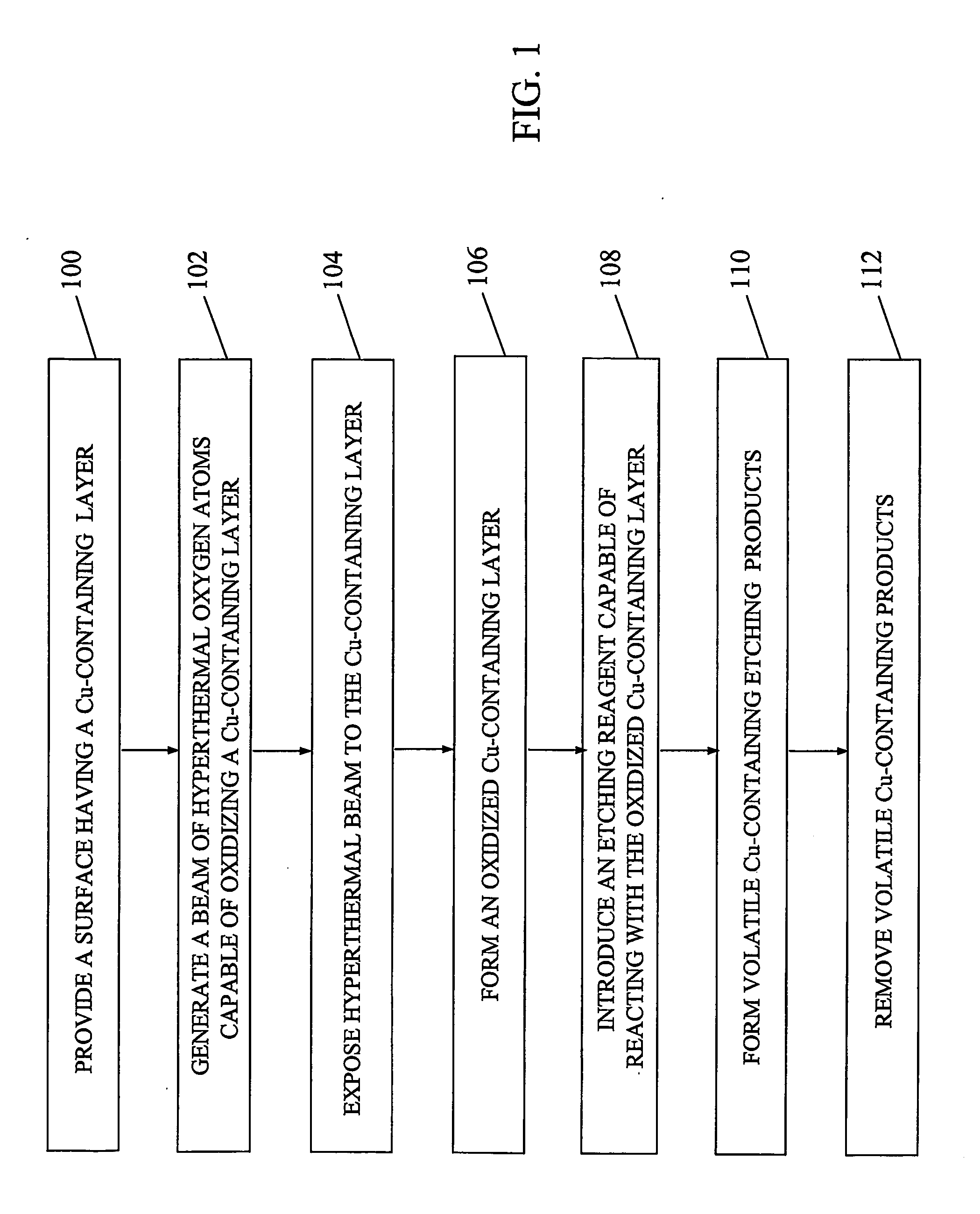Anisotropic dry etching of cu-containing layers
a technology of anisotropic dry etching and cu-containing layers, applied in the field of semiconductor processing, can solve the problems of difficult difficult scratching of cmp, and difficulty in defining extremely fine features
- Summary
- Abstract
- Description
- Claims
- Application Information
AI Technical Summary
Benefits of technology
Problems solved by technology
Method used
Image
Examples
Embodiment Construction
[0021] In general, the present invention pertains to a method and an apparatus for etching pure Cu and Cu-containing layers in manufacturing integrated circuits. The method uses a directional beam of high kinetic energy O-atoms to oxidize the Cu layers, and an etch reagent that forms volatile Cu-containing etch products when reacted with the oxidized Cu layers.
[0022] Importantly, the etch reagent reacts very slowly with unoxidized Cu on feature sidewalls, but reacts readily with oxidized Cu surfaces at low temperatures. Therefore, in order to achieve anisotropic etching and avoid undercutting of etch features, the oxidation rate of Cu on the vertical sidewalls of the etch features must be substantially slower than the oxidation of Cu on the horizontal surfaces. This is achieved using a directional O-atom beam.
[0023] The directional beam is preferably a hyperthermal beam of neutral O-atoms that has high kinetic energy and can be produced with low divergence from the substrate norma...
PUM
| Property | Measurement | Unit |
|---|---|---|
| temperature | aaaaa | aaaaa |
| temperature | aaaaa | aaaaa |
| temperature | aaaaa | aaaaa |
Abstract
Description
Claims
Application Information
 Login to View More
Login to View More - R&D Engineer
- R&D Manager
- IP Professional
- Industry Leading Data Capabilities
- Powerful AI technology
- Patent DNA Extraction
Browse by: Latest US Patents, China's latest patents, Technical Efficacy Thesaurus, Application Domain, Technology Topic, Popular Technical Reports.
© 2024 PatSnap. All rights reserved.Legal|Privacy policy|Modern Slavery Act Transparency Statement|Sitemap|About US| Contact US: help@patsnap.com










